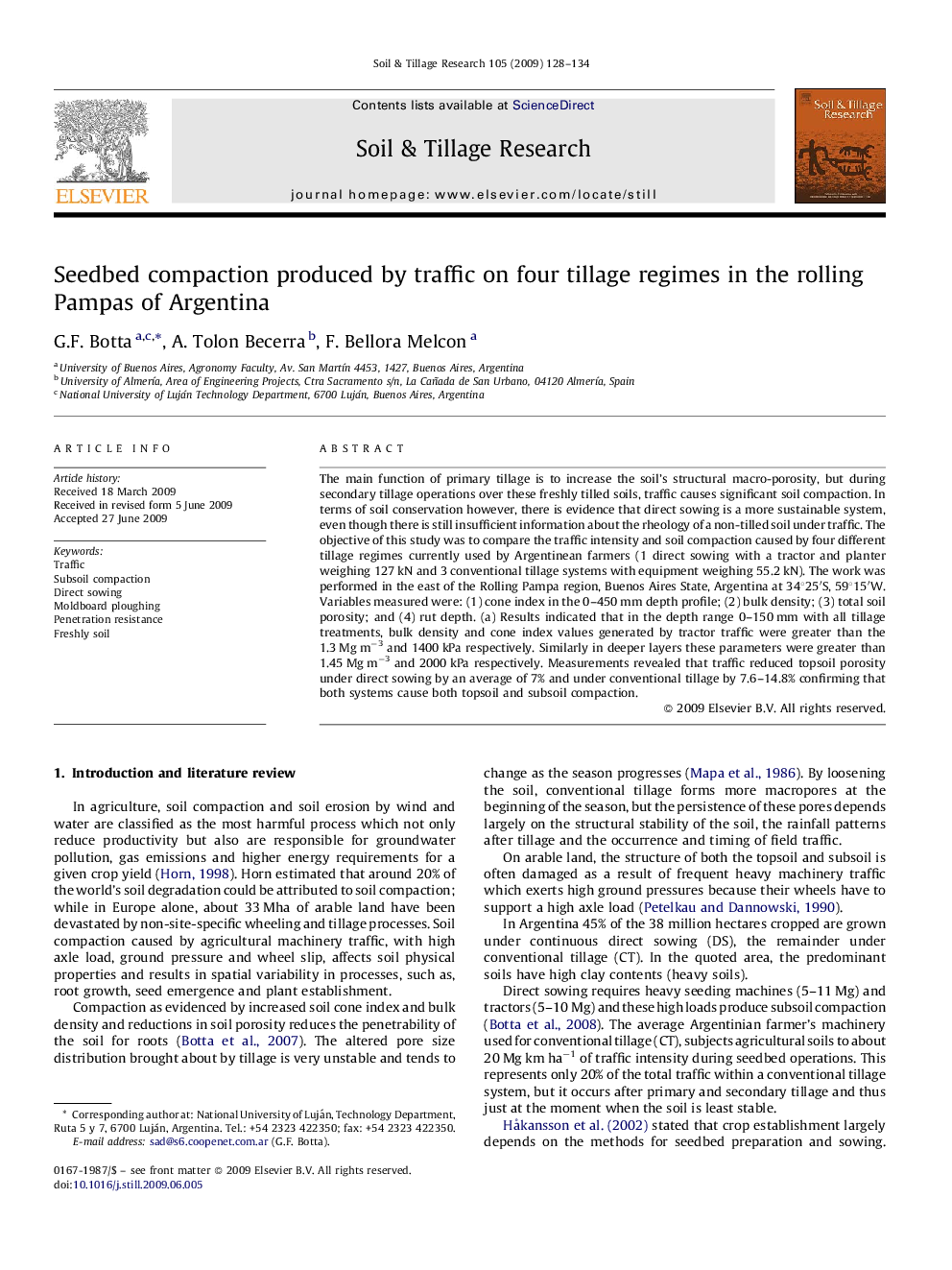| Article ID | Journal | Published Year | Pages | File Type |
|---|---|---|---|---|
| 306428 | Soil and Tillage Research | 2009 | 7 Pages |
The main function of primary tillage is to increase the soil's structural macro-porosity, but during secondary tillage operations over these freshly tilled soils, traffic causes significant soil compaction. In terms of soil conservation however, there is evidence that direct sowing is a more sustainable system, even though there is still insufficient information about the rheology of a non-tilled soil under traffic. The objective of this study was to compare the traffic intensity and soil compaction caused by four different tillage regimes currently used by Argentinean farmers (1 direct sowing with a tractor and planter weighing 127 kN and 3 conventional tillage systems with equipment weighing 55.2 kN). The work was performed in the east of the Rolling Pampa region, Buenos Aires State, Argentina at 34°25′S, 59°15′W. Variables measured were: (1) cone index in the 0–450 mm depth profile; (2) bulk density; (3) total soil porosity; and (4) rut depth. (a) Results indicated that in the depth range 0–150 mm with all tillage treatments, bulk density and cone index values generated by tractor traffic were greater than the 1.3 Mg m−3 and 1400 kPa respectively. Similarly in deeper layers these parameters were greater than 1.45 Mg m−3 and 2000 kPa respectively. Measurements revealed that traffic reduced topsoil porosity under direct sowing by an average of 7% and under conventional tillage by 7.6–14.8% confirming that both systems cause both topsoil and subsoil compaction.
